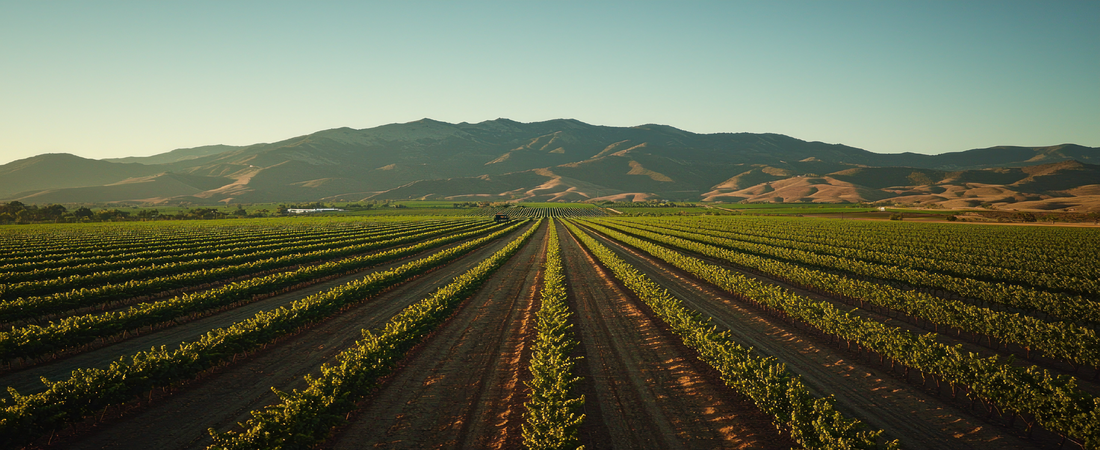
Future Outlook: Why Now Is the Time to Invest in Land
C MIn every generation, there are moments when opportunity and timing collide. For our grandparents, it was the post-war housing boom. For our parents, it was suburban real estate in the 1980s and 90s. For us, the moment is here, and it’s about land.
The truth is simple: land has always been a valuable resource. But today, economic forces, demographic shifts, and federal policies are aligning to make farmland and acreage one of the most strategic investments of our time. If you’ve been waiting for a sign that it’s time to diversify into land, here it is.
Land as the Ultimate Inflation Hedge
Inflation eats away at savings, erodes the value of cash, and makes the future uncertain. But some assets hold their value or even grow stronger during inflationary periods. Land is one of them.
- Farmland has historically outpaced inflation: USDA data shows farmland values have risen steadily for over 50 years.
- Unlike paper assets, land produces real, tangible value: crops, livestock, renewable energy, or lease income.
- It’s finite: No government policy or market crash can create more land.
If gold is often called a “safe haven,” then land is the safe haven you can stand on.

Source: USDA, BLS (2000–2023)
This chart shows how farmland values (blue) have consistently outpaced inflation (orange), particularly during times of economic uncertainty.
The Great Migration: From Urban to Rural
The pandemic didn’t create the shift toward rural living, but it accelerated it. Millions of Americans realized that crowded cities and inflated housing markets weren’t the only option. Remote work, rising home costs, and a desire for more space have fueled a wave of migration out of urban centers and into rural and suburban areas.
Population Growth Trends by Region:
|
Region |
2010–2020 Growth |
2020–2023 Growth |
|
Urban Counties |
+6.2% |
+1.5% |
|
Suburban Counties |
+10.1% |
+3.2% |
|
Rural Counties |
+2.2% |
+4.5% |
Source: U.S. Census Bureau
What this table shows is striking: rural counties, once written off as declining, are now growing faster than urban centers. Families are rediscovering the appeal of acreage for homesteads, farming, or simply living with more breathing room.
This migration is creating new demand for acreage, not just for farming and homesteads, but also for RV resorts, renewable energy projects, and community developments. Land that might have sat idle a decade ago is now the center of attention.
Federal Incentives: Farming, Energy, and Rural Development
The U.S. government is not blind to these trends. In fact, it’s actively supporting them. Federal incentives create multiple revenue streams for landowners.
Summary of Key Federal Incentives (2024–2025):
|
Program |
Agency |
Benefit to Landowners |
|
USDA Direct Farm Ownership Loans |
USDA |
Low-interest loans for purchasing or improving farmland |
|
REAP (Rural Energy for America) |
USDA |
Grants/loans for renewable energy on farms and rural land |
|
EQIP (Environmental Quality Incentives Program) |
USDA/NRCS |
Payments for sustainable soil, water, and grazing practices |
|
Clean Energy Tax Credits |
IRS/DOE |
Federal credits for leasing land to solar/wind projects |
|
Broadband & Rural Development |
USDA |
Grants improve rural infrastructure, raising land values |
In short: the government is actively pushing money into rural America. Landowners who align with these programs benefit twice from direct incentives and from the appreciation of their land as rural infrastructure improves.
Why Now, Not Later?
It’s easy to assume land will always be available. But the reality is stark:
- The U.S. continues to lose over a million acres of farmland each year to urban sprawl.
- Institutional investors and billionaires are already consolidating ownership, shrinking opportunities for everyday families.
- Federal incentives often reward early adopters, meaning waiting too long can mean missing the most lucrative programs.
The window of opportunity is wide open, but it won’t stay open forever.
The Role of Land Banks: Opening the Door for Families
While institutions are racing to secure farmland, new models like land banks and land trusts are leveling the playing field. By pooling resources, families can participate in land ownership, benefit from appreciation and income, and build generational wealth without needing billionaire-sized checkbooks.
This is the mission behind the Berean Holdings Company land bank model: making land ownership accessible, transparent, and impactful for everyday investors who want more than Wall Street promises.
Closing Thought
The future is clear:
- Inflation isn’t slowing down.
- Rural migration is reshaping America’s demographics.
- Federal incentives are fueling land-based opportunities.
Land has always been the backbone of wealth in America. Today, it’s not just a store of value; it’s a platform for growth, community, and legacy.
The timing isn’t tomorrow. It isn’t “someday.” The timing is now.
